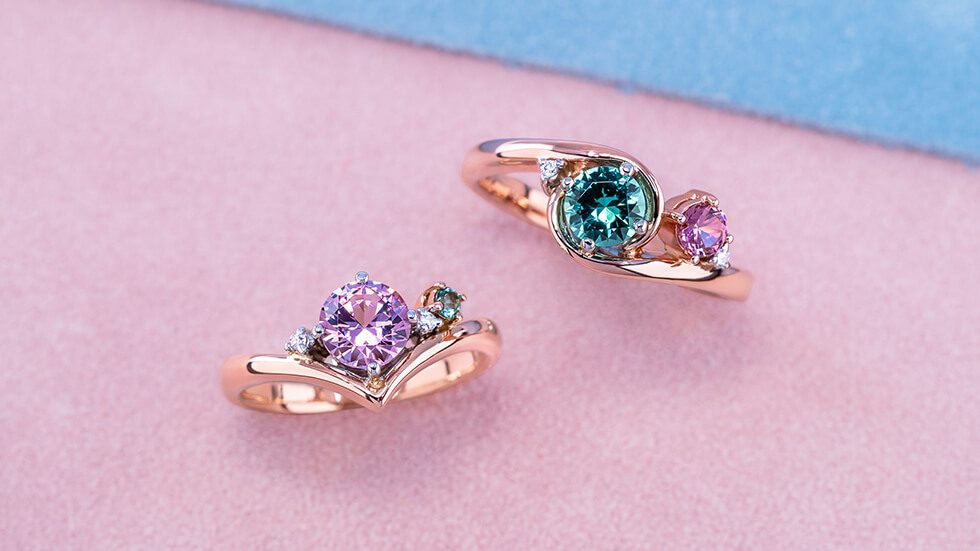Nah, that’s just what De Beers wants you to believe.
Diamonds aren’t the traditional part, but rings are! Ancient Egyptians used to construct rings out of braided reeds and wore them on the fourth finger of the left hand, just like today’s modern customs. A circular ring, which has no beginning or end, donned on the fourth finger which was believed to have a vein which led straight to the heart (the vena amoris), was a symbol of endless affection between man and woman. Ancient Romans continued this tradition but with their own twist, as wives wore rings attached to small keys, indicating their husbands’ ownership, almost like a business transaction!
Before the 1930s, only 10% of American engagement rings contained a Diamond, but by the turn of the century, 80% did, largely due to the success of De Beer’s ‘a diamond is forever’ marketing campaign. During the Victorian era, ‘regard rings’ were very popular. They featured a row of stones which spelled out the word ‘regard’ with the first letter of each gem, usually a Ruby, Emerald, Garnet, Amethyst, Ruby and Diamond. What if a modern rendition included Rhodolites instead of Rubies, Ametrine or Alexandrite instead of Amethyst, or precious gems spelling out other meaningful words instead? Other traditions include mounting six stones; four gems being the birthstones of the couple’s parents and the latter two the birthstones of the bride and groom. This signified the joining of two families. During the Renaissance, as much as rings were ‘symbols’ of love, they sometimes also functioned as red flags! Puzzle rings featured multiple interlocking pieces that fit together to form a single band and they were said to be so complicated to put back together that you’d know if your future spouse had taken it off! 😉
Today, millennial couples are moving away from Diamonds and are looking to express their love in more unique ways. With their myriad of colours, coloured gemstones, which are equally precious and a lot of the time, far more rare than Diamonds, are the perfect alternative. Tanzanites, when heated, have a vibrant and luscious purplish blue hue, and when unheated, sometimes display hues of grey, purple and green. They are the gem of this generation because they were discovered in 1967 and at the current rate of mining, likely run out of supply before the turn of the century! As rare as they are, because they’re lesser known, for the cost of a 1 carat Diamond, you can get a 10 carat Tanzanite which rivals the Titanic’s Heart of the Ocean (if we have them, of course).
Engagement rings of the past are so much more colourful, meaningful (and cheeky, even!) than today’s default Diamond solitaire. You might not want to present your girlfriend with a ring that’s straight out of a museum archive, but we hope you consider making a custom piece of heirloom jewellery that truly sums up your relationship, in a way that is unique and special to you.
